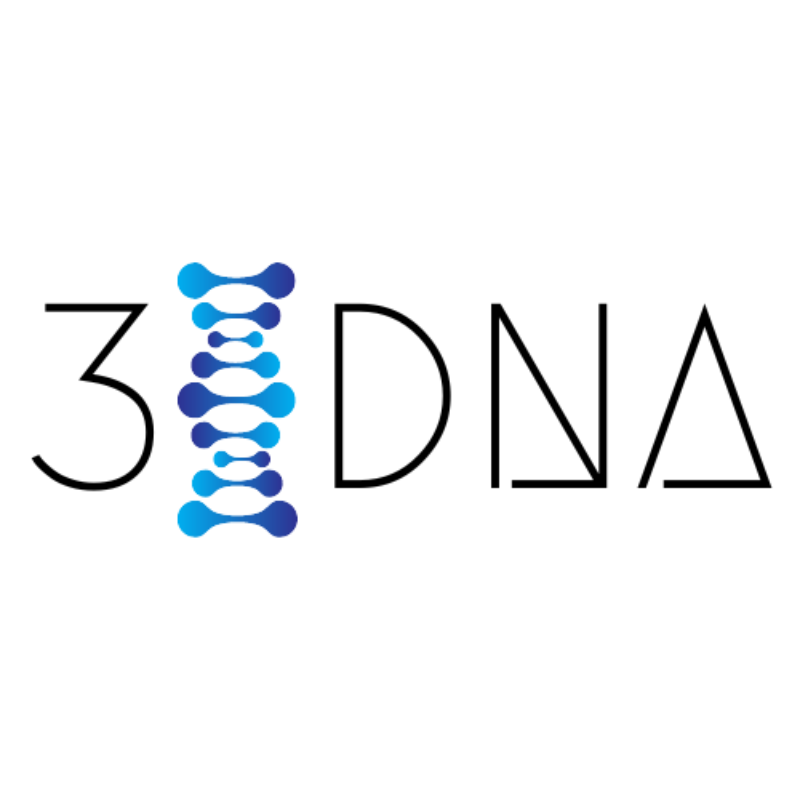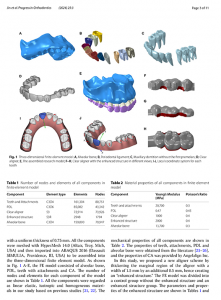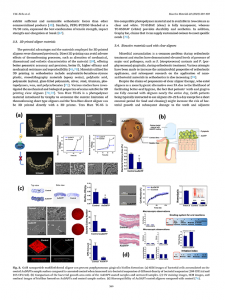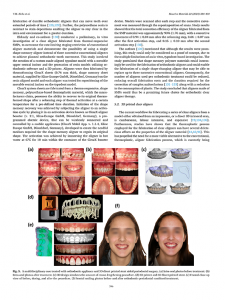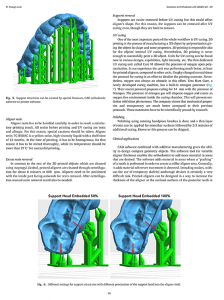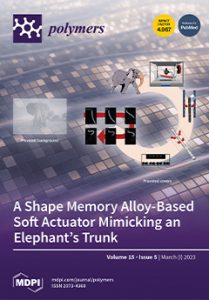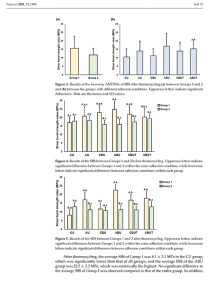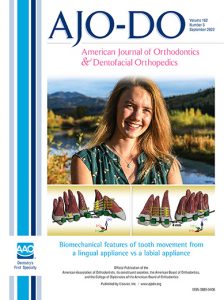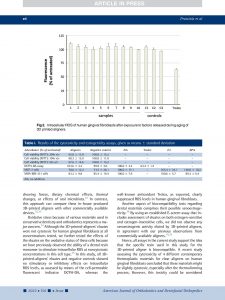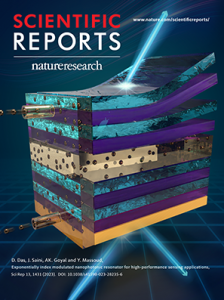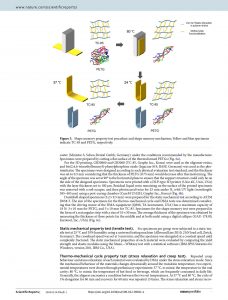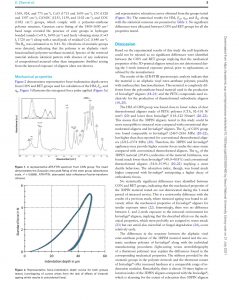
Progress in Orthodontics
The effect of enhanced structure in the posterior segment of clear aligners during anterior retraction: a three‑dimensional finite element and experimental model analysis
Abstract
Background: Mesial tipping of posterior teeth occurs frequently during space closure with clear aligners (CAs). In this study, we proposed a new modification of CA by localized thickening of the aligner to form the enhanced structure and investigate its biomechanical effect during anterior retraction.
https://link.springer.com/article/10.1186/s40510-023-00502-2
Published: January 2024
Australasian Orthodontic Journal
Comparison of the cytotoxicity of 3D-printed aligners using different post-curing procedures: an in vitro study
Objective
Three-dimensional (3D) printing technology represents a novel method for manufacturing aligners. The aim of the present study was to assess the in-vitro cytotoxicity of 3D-printed aligners using different post-polymerisation conditions.
Materials
Aligners were printed using the same 3D-print resin (TC-85DAC, Graphy, Seoul, Korea) and printer (AccuFab-L4D, Shining 3D Tech. Co., Hangzhou, China), followed by different post-curing procedures. Six aligners were post-polymerised for 14 min using the Tera Harz Cure and a nitrogen generator curing machine (THC2, Graphy, Seoul, Korea) (P1)…
https://sciendo.com/article/10.2478/aoj-2023-0026
Published: July 2023
Journal of Bioactive Materials
Advances in orthodontic clear aligner materials
Abstract
Rapid technological improvements in biomaterials, computer-aided design (CAD) and manufacturing (CAM) have endorsed clear aligner therapy (CAT) as a mainstay of orthodontic treatment, and the materials employed for aligner fabrication play an all-important role in determining the clinical performance of clear aligners. This narrative review has attempted to comprehensively encompass the entire gamut of materials currently used for the fabrication of clear aligners and elucidate their characteristics that are crucial in determining their performance in an oral environment…
https://www.sciencedirect.com/science/article/pii/S2452199X22004303
Published: April 2023
Seminars in Orthodontics
3D Printed Aligners: Material Science, Workflow and Clinical Applications
Abstract
Clear aligner orthodontic treatment is not a new treatment modality. Treatment with the use of plastic invisible removable appliances counts more than 80 years when Kesling introduced the tooth positioner, Sheridan introduced the Essix aligner and Align technology its aligners. In-house designing and aligner fabrication has been around for more than 10 years. The last years a digital technological and material advancement has changed the process of aligner manufacturing from the plastic foil thermoforming procedure to a direct aligner printing one…
https://www.sciencedirect.com/science/article/abs/pii/S1073874622000809
Published: March 2023
Journal of Polymers
Effect of Adhesion Conditions on the Shear Bond Strength of 3D Printing Resins after Thermocycling Used for Definitive Prosthesis
Abstract
Three-dimensional (3D) printing polymers such as urethane dimethacrylate (UDMA) and ethoxylated bisphenol A dimethacrylate (Bis-EMA) are typically used in definitive prosthesis and require surface treatments before bonding. However, surface treatment and adhesion conditions often affect long-term use. Herein, polymers were divided into Groups 1 and 2 for the UDMA and Bis-EMA components, respectively…
https://www.mdpi.com/2073-4360/15/6/1390
Published: March 2023
American Journal of Orthodontics and Dentofacial Orthopedics
Cytotoxicity and estrogenicity of a novel 3-dimensional printed orthodontic aligner
Introduction
Orthodontic aligners printed with in-office 3-dimensional (3D) procedures have been described, but no data on their biocompatibility exist. This study investigates the cytotoxicity and estrogenicity of a 3D-printed orthodontic aligner by assessing its biological and behavioral effects.
https://www.sciencedirect.com/…/pii/S0889540622003961
Published: September 2022
The Korean Journal of Orthodontics
Comparison of dimensional accuracy between direct-printed and thermoformed aligners
Abstract
Objective: The purpose of this study was to evaluate and compare the dimensional accuracy between thermoformed and direct-printed aligners.
Methods
Three types of aligners were manufactured from the same reference standard tessellation language (STL) file: thermoformed aligners were manufactured using Zendura FLXTM (n = 12) and Essix ACETM (n = 12), and direct-printed aligners were printed using Tera HarzTM TC-85DAP 3D Printer UV Resin (n = 12). The teeth were not manipulated with any tooth-moving software in this study. The samples were sprayed with an opaque scanning spray, scanned, imported to Geomagic® Control XTM metrology software, and superimposed on the reference STL file by using the best-fit alignment algorithm. Distances between the aligner meshes and the reference STL file were measured at nine anatomical landmarks…
https://e-kjo.org/journal/view.html?doi=10.4041/kjod21.269
YouTube Link: https://www.youtube.com/watch?v=lSPJR6VMAiE
Published: July 2022
Journal on Children’s Health
Three-Dimensional-Printed Customized Orthodontic and Pedodontic Appliances: A Critical Review of a New Era for Treatment
Abstract
Three-dimensional (3D) designing and manufacturing technology is a direct derivative of digital technology. Three-dimensional volume and surface acquisition, CAD software, and 3D manufacturing are major changes included in daily practice in many orthodontic and pedodontic offices. Customized appliances can be designed using dental CAD software or general-purpose CAD software in the office or a laboratory. Materials that can be used are resins, alloys, or zirconia…
https://www.mdpi.com/2227-9067/9/8/1107
Published: July 2022
Nature Scientific Reports
Thermo-mechanical properties of 3D printed photocurable shape memory resin for clear aligners
Abstract
To overcome the limitations of the conventional vacuum thermoforming manufacturing method, direct 3D printing of clear aligners has been developed. The present study investigated the thermo-mechanical and viscoelastic properties of a photocurable resin TC-85, which is a new material for the direct 3D printed clear aligners, comparing to a conventional thermoplastic material polyethylene terephthalate glycol…
https://www.nature.com/articles/s41598-022-09831-4
Published: April 2022
European Journal of Orthodontics
In-house 3D-printed aligners: effect of in vivo ageing on mechanical properties
Objective
To investigate alterations in the mechanical properties of in-house three-dimensional (3D) printed orthodontic aligners after intraoral ageing.
Materials and methods: Sixteen 3D-printed aligners (TC-85DAC resin, Graphy, Seoul, Korea)were used for the purpose of the study, which were divided into 10 control (not used) aligners and 6 materials retrieved from 4 patients after 1-week service (retrieved group)…
https://academic.oup.com/ejo/article/44/1/51/6265460
Published: January 2022
